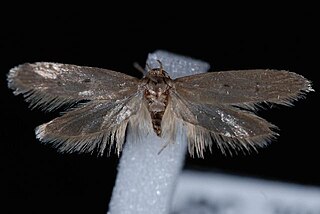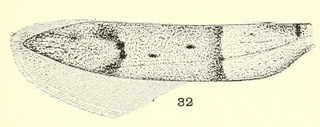
Holcocera is a gelechoid moth genus of the family Blastobasidae. There are about 70 described species.
Holcocera anomalella is a moth in the family Blastobasidae. It is found in the United States, including Arizona.

Holcocera chalcofrontella is a moth in the family Blastobasidae. It is found in North America, including Pennsylvania, Texas, Missouri, Maryland, West Virginia, Arizona, British Columbia, Florida, Illinois, Maine, Manitoba, Michigan, New Brunswick, Ohio, Ontario, Quebec, Tennessee, Vermont and Washington.
Holcocera crassicornella is a moth in the family Blastobasidae. It is found in southern Florida.
Holcocera gigantella is a moth in the family Blastobasidae. It is found in the United States, including Colorado, Arizona and California.
Holcocera guilandinae is a moth in the family Blastobasidae. It is found in the United States in southern Florida and on Bermuda.
Holcocera panurgella is a moth in the family Blastobasidae. It is found in Arizona, United States.
Holcocera paradoxa is a moth in the family Blastobasidae. It is found in Arizona, United States.
Holcocera villella is a moth in the family Blastobasidae. It is found in the United States, including Maryland, Oregon, Maine and California.
Calosima lucidella is a moth in the family Blastobasidae. It is found in the US state of Florida.
Hypatopa crescentella is a moth in the family Blastobasidae. It is found in North America, including Utah.
Hypatopa funebra is a moth in the family Blastobasidae. It is found in North America, including Pennsylvania, Maryland, Maine and Florida.
Hypatopa hulstella is a moth in the family Blastobasidae. It is found in the United States, including Maine.
Hypatopa interpunctella is a moth in the family Blastobasidae. It is found in the United States, including Utah.
Hypatopa nucella is a moth in the family Blastobasidae. It is found in the United States, including Colorado and Maine.

Hypatopa spretella is a moth in the family Blastobasidae. It is found in the United States, including Arizona and Florida.
Hypatopa titanella is a moth in the family Blastobasidae. It is found in North America, including Nova Scotia and Maine.
Hypatopa vestaliella is a moth in the family Blastobasidae. It is found in the United States, including Maryland, Massachusetts, Pennsylvania and Maine.
Pigritia laticapitella is a moth in the family Blastobasidae. It is found in the United States, including Texas, Kansas, California, New Jersey, Pennsylvania, Maine, Ohio and South Carolina.
Pigritia murtfeldtella is a moth in the family Blastobasidae. It is found in the United States, including Maine, Ohio, Kentucky, Pennsylvania, Georgia, Missouri, Texas and California.



